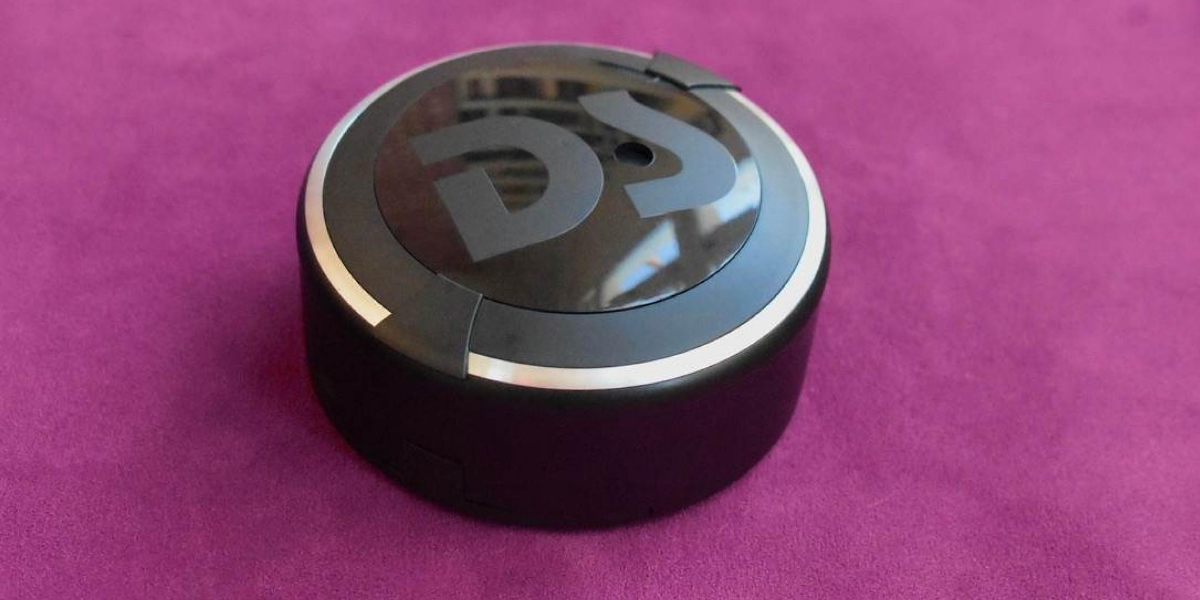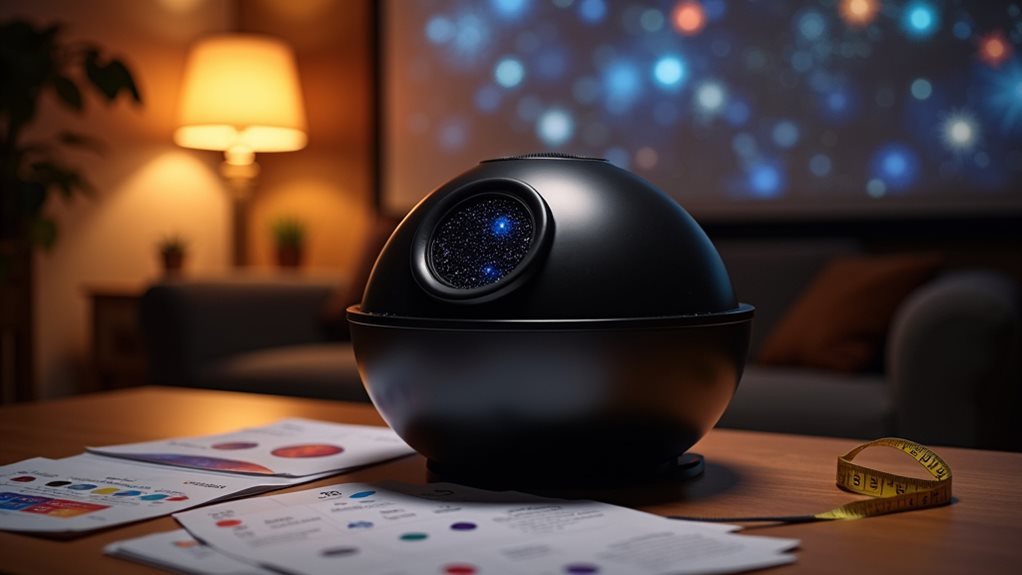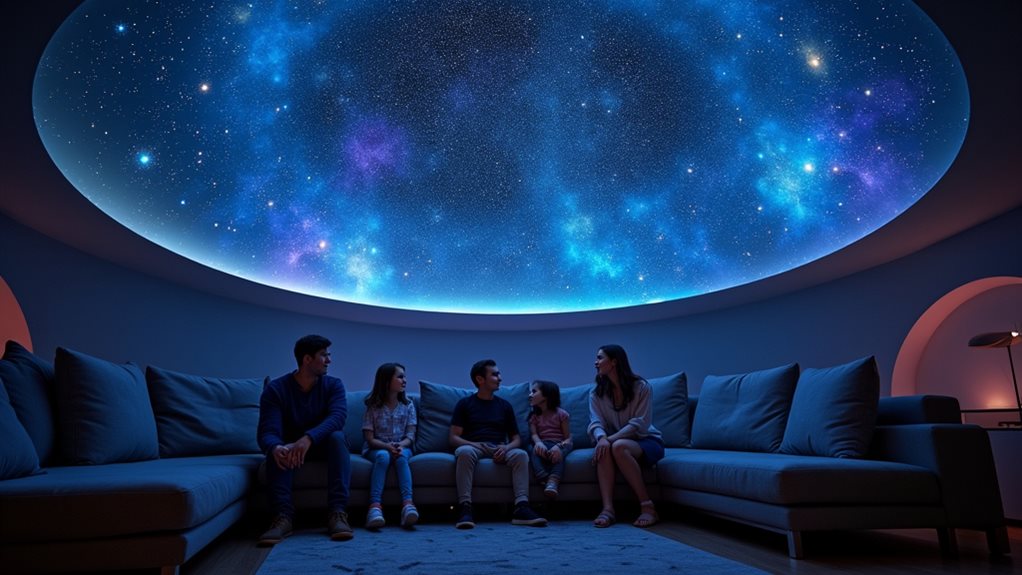When you search online for star projectors, you’re presented with a lot of different results. Each model will give a different effect and many are more concerned with providing a nice light show than giving you accurate results. So what is the most realistic home planetarium?
The Dark-Skys DS-1 is the most realistic home planetarium thanks to the 4.1 million-star chrome on glass star disc. The Homestar Flux is also accurate, but only projects 60,000 stars.
The DS-1 is a fantastic device, as covered in this article, but it’s also very expensive. To address the issue of pricing, the Dark-Skys team have developed the Skyview, a very affordable, portable, projector that retains an accurate image of the night sky.
Dark-Skys Skyview
The world’s smallest planetarium is the polar opposite of the DS-1 in everything but quality. The little unit is the most compact, affordable and accurate star projector, with the ability to quickly and easily shift between viewing stars or stars and constellations.

Pros
- Compact design
- Over 1.2 million stars
- Quick to view constellations
Cons
- Can’t control rotation speed
The Skyview is Pocket Friendly
While the DS-1 is the largest star projector I’ve tested, the Skyview is the opposite; it’s by far the smallest star projector I’ve ever used. It can literally be slipped into your pocket, making it pocket friendly both in terms of size and price, coming in at just $40 direct from the manufacturer.
The overall look reminds me of an Amazon Alexa dot: it’s a black puck with control switches on the bottom and a rotating top.
As well as the controls, the bottom of the Skyview has a flip-out stand, meaning this can project directly up or at an angle.
It doesn’t need to be constantly plugged in to a power outlet thanks to the on-board battery, which you charge via the included USB cable.
I got in touch with the team to find out how the Skyview came about and what technology is inside the little projector:
I wanted to create a low-cost planetarium with a high-tech feel. It had to be small, lightweight and battery operated.
The Skyview is based on a Diffractive Optical Element. As far as I know, a D.O.E. has never been used this way before, and I have applied for a patent for it.
The light source is a 450nm blue laser diode, so it’s always in focus.

I wanted it to be able to switch between stars and constellations and that’s where the complexity started.
It took quite a while to make it work correctly and to get it into a small package. It projects a real view of the night sky and not just a grid pattern of stars like other laser projectors.
Chris Miller, https://dark-skys.com/
Skyview Projection
In the box you get the mini projector, a small information leaflet and the charging cable.
Aside from giving it a charge there isn’t anything to set up, just power it on and point it at the ceiling!
Next to the power switch is the on/off for the rotation movement. There isn’t a way to control the speed of rotation; it’s set a little too fast for me. This is a personal preference; I’m sure if it were a slow speed there would be others wanting it faster.
The little device packs in a powerful light, projecting over 1.2 million stars, not in a random grid but as an accurate representation of the night sky. You’ll find your room turns blue when this is on.

Rotate the top of the Skyview, and you’ll shift between the regular view and the constellation view. It’s a smooth transition, and it looks great!

Given the low price and compact size I can see this making a brilliant gift for anyone wanting to learn about the constellations.
Dark-Skys Skyview Video Review
Pictures don’t do this little device justice so be sure to check out my video demonstration.
Final Thoughts
It’s clear a lot of thought has been put into the Skyview. It certainly answers the main obsticle people have with the DS-1, the price, while retaining the accurate representation of the night sky.
Competitor products at this price usually make use of a simple dot grid and a nebula effect, great if you want an interesting light show. For those who want to see the real night sky and learn about the different constellations the Skyview steps up as the best low cost option available.
You can get it directly from Dark-Skys: https://dark-skys.com/products/dark-skys-skyview-pocket-planetarium




